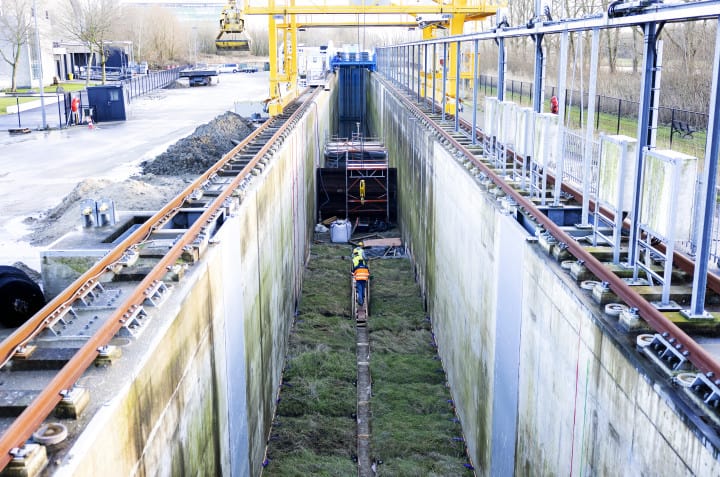
That salt extraction from seawater is still in existence is a minor miracle. Nowadays salt is pumped up from the ground (in the Netherlands). But salt extraction, the harvesting of salt from seawater, is something that was done centuries ago.
The water on the banks of the Oosterschelde is clear thanks to the purifying properties of the sandbanks, oyster and mussel beds.
That is certainly true, but Christian Clerx from the Dutch province of Zeeland has rediscovered this age-old craft and for a few years now he has been making and marketing sea salt under the brand name of Zeeuwsche Zoute. On the banks of the Oosterschelde, near Bruinisse, he has the seawater pumped up when the tide comes in. This is where the water is at its best, thanks to the purifying properties of the sandbanks, oyster and mussel beds.
Innovating a traditional process
The water that is pumped up is then filtered in the salt refinery in order to remove microplastics from the water, among other things. Dirt, such as seaweed, is also filtered out without the sea salt losing its natural mineral content. The water is then heated in a vat until most of the seawater evaporates. At the next stage, the salt is transferred into smaller, open salt vats. Salt crystals (shaped like miniaturized upside down pyramids) subsequently form on the surface of the water. When the crystals are large enough, they sink to the bottom of the vats by themselves.
The right kind of flavor for salt flakes
Then it is time for the harvest. This is where you can see the hand of the artisan at work, which is how Clerx describes this craft on his website. When the salt flakes have the right flavor and texture, they are carefully ladled out of the vats and then left to dry slowly in salt ovens.
This is a traditional process.

Distilled water from the salt extraction company for a cleaning company.
The innovative aspect lies in the leftover water. This does not disappear into the environment, but is instead collected and since the beginning of this year, is supplied to ‘Schoonmaak op Maat’, a cleaning company from nearby Zierikzee. They like to use that water because it does not contain any limescale. The company no longer fills its buckets with tap water, but with purified seawater from Zeeuwsche Zoute.
Sustainable production
The limited production (200 kilograms of salt per month) of Zeeuwsche Zoute is sustainable in more ways than one. All of the heat needed during the production process comes from wind energy. The company sells the salt in small bags (made of plastic, admittedly), glass jars, cardboard cylinders and salt mills made of glass and biodegradable bioplastic. The small company can already count on a qualitatively first-class clientele. The future of Zeeuwsche Zoute is sure to be very sustainable in that sense as well.
Read more about the innovative aspects of salt here:
Water and salt are all that’s needed for this proposed cooling system








